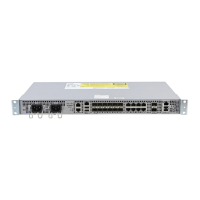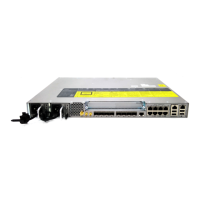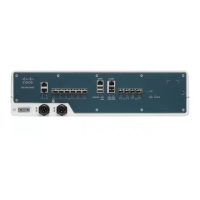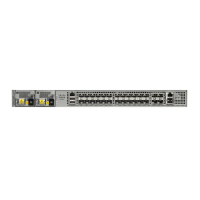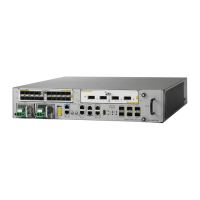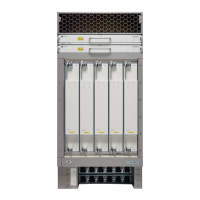CHAPTER 4
ITU-T G.8032 Ethernet Ring Protection Switching
The ITU-T G.8032 Ethernet Ring Protection Switching feature implements protection switching mechanisms
for Ethernet layer ring topologies. This feature uses the G.8032 Ethernet Ring Protection (ERP) protocol,
defined in ITU-T G.8032, to provide protection for Ethernet traffic in a ring topology, while ensuring that
no loops are within the ring at the Ethernet layer. The loops are prevented by blocking traffic on either a
predetermined link or a failed link.
•
Prerequisites for Configuring ITU-T G.8032 Ethernet Ring Protection Switching, page 47
•
About ITU-T G.8032 Ethernet Ring Protection Switching, page 47
•
Restrictions for Configuring ITU-T G.8032 Ethernet Ring Protection Switching, page 55
•
How to Configure ITU-T G.8032 Ethernet Ring Protection Switching, page 55
•
Configuration Examples for ITU-T G.8032 Ethernet Ring Protection Switching, page 67
Prerequisites for Configuring ITU-T G.8032 Ethernet Ring
Protection Switching
•
The Ethernet Flow Points (EFPs) and Trunk Ethernet Flow Points (TEFPs) must be configured.
About ITU-T G.8032 Ethernet Ring Protection Switching
Ring Protection Links
An Ethernet ring consists of multiple Ethernet ring nodes. Each Ethernet ring node is connected to adjacent
Ethernet ring nodes using two independent ring links. A ring link prohibits formation of loops that affect the
network. The Ethernet ring uses a specific link to protect the entire Ethernet ring. This specific link is called
the Ring Protection Link (RPL). A ring link is bound by two adjacent Ethernet ring nodes and a port for a
ring link (also known as a ring port). There must be at least two Ethernet ring nodes in a Ethernet ring.
LAN Switching Configuration Guide Cisco IOS XE Everest 16.5.1 (Cisco ASR 900 Series)
47

